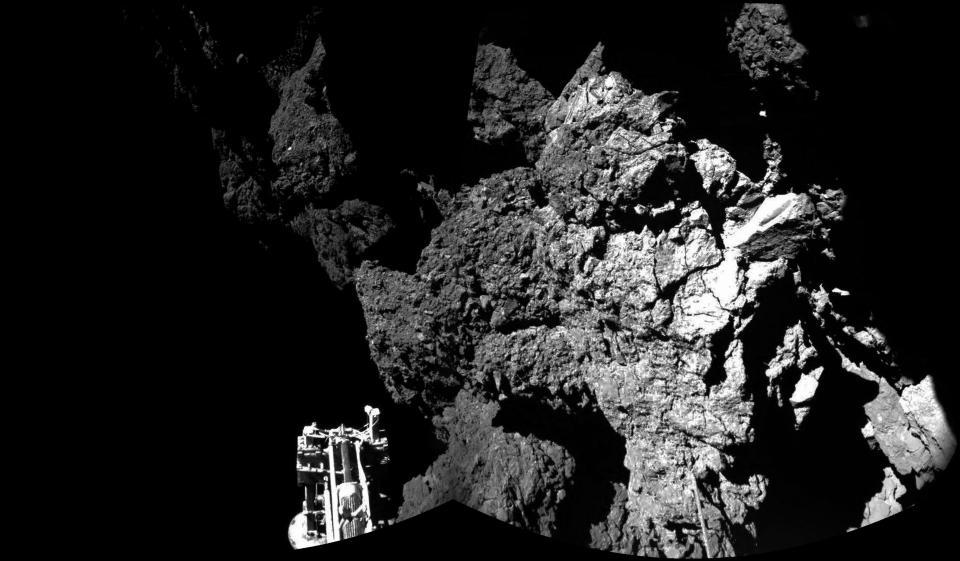Life on Earth ‘could have arrived on comet’, study suggests

Did the building blocks of life on Earth arrive in an ancient comet impact, with chemicals inside a hurtling comet making life on our planet possible?
This theory gained new support this week as a study showed that comets may be covered in ammonium salts, containing nitrogen, a building block for life.
Previous measurements of comets, such as when the European comet mission Giotto flew past Halley’s comet three decades ago, found a surprising lack of nitrogen.
READ MORE
Stars ‘need a partner’ to set off universe’s brightest explosions
Meet the adorable cat with two different faces
World’s southernmost reef hit by coral bleaching
Binary Earth-sized planets possible around distant stars
But new measurements of dust from the comet 67P/Churyumov-Gerasimenko from the European Space Agency’s Rosetta space probe suggest that nitrogen may be present in the form of salts.
Less than a month before the end of the Rosetta mission, the probe was a mile above the surface of 67P/Churyumov-Gerasimen as it flew through a dust cloud from the comet.
Kathrin Altwegg, of the University of Bern, said: “This dust almost destroyed our instrument and confused Rosetta’s position control.”
Thanks to the flight through the dust cloud, it was possible to detect substances which normally remain in the cold environment of the comet on the dust particles and therefore cannot be measured.
Altwegg said: “We came up with the idea that the incidence of ammonia in the ROSINA [Rosetta Orbiter Spectrometer for Ion and Neutral Analysis] data could potentially be traced back to the occurrence of ammonium salts.

“As a salt, ammonia has a much higher evaporation temperature than ice and is therefore mostly present in the form of a solid in the cold environment of a comet.
“It has not been possible to measure these solids either through remote sensing with telescopes or on the spot until now.”
The ammonium salts discovered include several astro-biologically relevant molecules which may result in the development of urea, amino acids, adenine and nucleotides.
Altwegg said: “This is definitely a further indication that comet impacts may be linked with the emergence of life on Earth.”
“The ROSINA team has found traces of five different ammonium salts: ammonium chloride, ammonium cyanide, ammonium cyanate, ammonium formate and ammonium acetate,” said the team’s chemist, and co-author of the study, Dr. Nora Hänni.
“Until now, the apparent absence of nitrogen on comets was a mystery. Our study now shows that it is very probable that nitrogen is present on comets, namely in the form of ammonium salts.”


